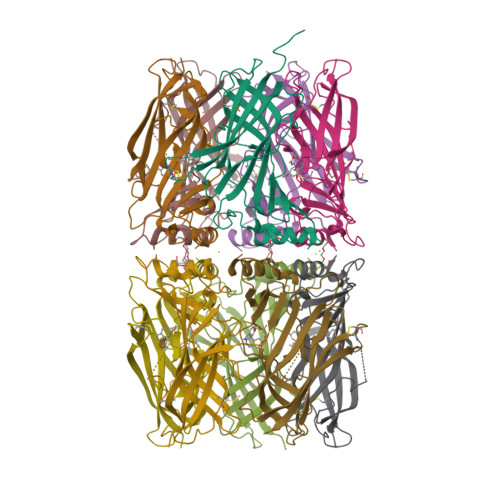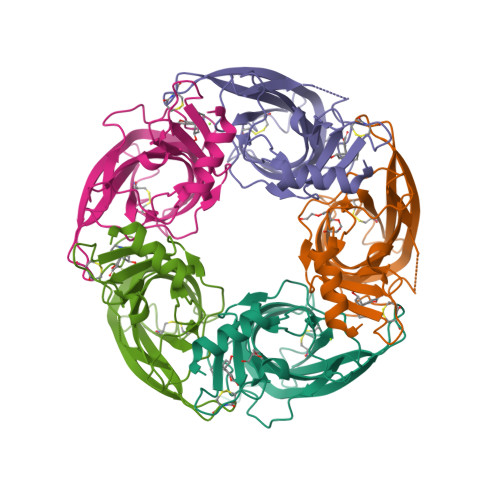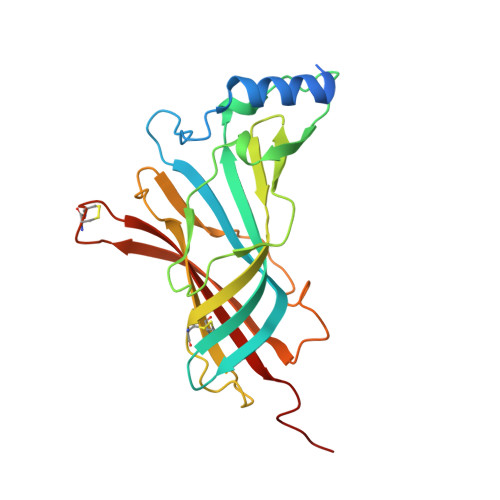Crystal Structure of Lymnaea Stagnalis Achbp Complexed with the Potent Nachr Antagonist Dh-Betab-E Suggests a Unique Mode of Antagonism
Shahsavar, A., Kastrup, J.S., Nielsen, E.O., Kristensen, J.L., Gajhede, M., Balle, T.(2012) PLoS One 7: 40757
- PubMed: 22927902
- DOI: https://doi.org/10.1371/journal.pone.0040757
- Primary Citation of Related Structures:
4ALX - PubMed Abstract:
Nicotinic acetylcholine receptors (nAChRs) are pentameric ligand-gated ion channels that belong to the Cys-loop receptor superfamily. These receptors are allosteric proteins that exist in different conformational states, including resting (closed), activated (open), and desensitized (closed) states. The acetylcholine binding protein (AChBP) is a structural homologue of the extracellular ligand-binding domain of nAChRs. In previous studies, the degree of the C-loop radial extension of AChBP has been assigned to different conformational states of nAChRs. It has been suggested that a closed C-loop is preferred for the active conformation of nAChRs in complex with agonists whereas an open C-loop reflects an antagonist-bound (closed) state. In this work, we have determined the crystal structure of AChBP from the water snail Lymnaea stagnalis (Ls) in complex with dihydro-β-erythroidine (DHβE), which is a potent competitive antagonist of nAChRs. The structure reveals that binding of DHβE to AChBP imposes closure of the C-loop as agonists, but also a shift perpendicular to previously observed C-loop movements. These observations suggest that DHβE may antagonize the receptor via a different mechanism compared to prototypical antagonists and toxins.
Organizational Affiliation:
Department of Drug Design and Pharmacology, Faculty of Health and Medical Sciences, University of Copenhagen, Copenhagen, Denmark.




















